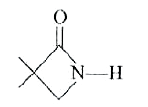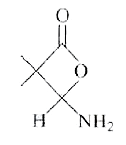The correct set of the products obtained in the following reactions :
(A)RCNreduction −−−−−−→(B)RCN(i)CH3MgBr(ii)H2O
(c)RNC hydrolysis −−−−−−−→(D)RNH2HNO2−−−→
the correct answer is :
2∘ Amine Methylketone 1∘ Amine Alcohol
1∘ Amine Methylketone 1∘ Amine Alcohol
2∘ Amine Methylketone 2∘ Amine Acid
1∘ Amine Methylketone 1∘ Amine Aldehyde
The correct Answer is:B
To solve the question, we will analyze each reaction step by step and identify the products formed.
Step 1: Reduction of RCN
- Reaction: RCN (a nitrile) undergoes reduction.
- Product: The reduction of a nitrile (RCN) typically yields a primary amine (RNH2).
- Explanation: The carbon-nitrogen triple bond in the nitrile is reduced to a carbon-nitrogen single bond, resulting in a primary amine.
Step 2: Reaction of RCN with CH3MgBr and H2O
- Reaction: RCN reacts with CH3MgBr (a Grignard reagent) followed by hydrolysis with water.
- Product: The product of this reaction is a methyl ketone (R-C(=O)-CH3).
- Explanation: The Grignard reagent adds to the carbon of the nitrile, forming an intermediate that upon hydrolysis produces a ketone.
Step 3: Hydrolysis of RNC
- Reaction: RNC (isocyanide) undergoes hydrolysis.
- Product: Hydrolysis of isocyanide (RNC) yields a primary amine (RNH2).
- Explanation: The hydrolysis of isocyanides results in the formation of primary amines.
Step 4: Reaction of RNH2 with HNO2
- Reaction: RNH2 (a primary amine) reacts with HNO2 (nitrous acid).
- Product: The product of this reaction is an alcohol (R-OH).
- Explanation: The reaction of a primary amine with nitrous acid results in the formation of an alcohol through the formation of a diazonium salt that decomposes to give the alcohol.
Summary of Products
1. From RCN (reduction) → Primary amine (RNH2)
2. From RCN with CH3MgBr and H2O → Methyl ketone (R-C(=O)-CH3)
3. From RNC (hydrolysis) → Primary amine (RNH2)
4. From RNH2 with HNO2 → Alcohol (R-OH)
Final Answer
The correct set of products obtained in the reactions is:
- Primary amine
- Methyl ketone
- Primary amine
- Alcohol
The correct answer is the second option.
---
- Reaction: RCN (a nitrile) undergoes reduction.
- Product: The reduction of a nitrile (RCN) typically yields a primary amine (RNH2).
- Explanation: The carbon-nitrogen triple bond in the nitrile is reduced to a carbon-nitrogen single bond, resulting in a primary amine.
- Reaction: RCN reacts with CH3MgBr (a Grignard reagent) followed by hydrolysis with water.
- Product: The product of this reaction is a methyl ketone (R-C(=O)-CH3).
- Explanation: The Grignard reagent adds to the carbon of the nitrile, forming an intermediate that upon hydrolysis produces a ketone.
- Reaction: RNC (isocyanide) undergoes hydrolysis.
- Product: Hydrolysis of isocyanide (RNC) yields a primary amine (RNH2).
- Explanation: The hydrolysis of isocyanides results in the formation of primary amines.
- Reaction: RNH2 (a primary amine) reacts with HNO2 (nitrous acid).
- Product: The product of this reaction is an alcohol (R-OH).
- Explanation: The reaction of a primary amine with nitrous acid results in the formation of an alcohol through the formation of a diazonium salt that decomposes to give the alcohol.
1. From RCN (reduction) → Primary amine (RNH2)
2. From RCN with CH3MgBr and H2O → Methyl ketone (R-C(=O)-CH3)
3. From RNC (hydrolysis) → Primary amine (RNH2)
4. From RNH2 with HNO2 → Alcohol (R-OH)
The correct set of products obtained in the reactions is:
- Primary amine
- Methyl ketone
- Primary amine
- Alcohol
Topper's Solved these Questions
- AMINESBOOK - VMC MODULES ENGLISHCHAPTER - AMINESEXERCISE - ENABLE
45 Videos
- AMINESBOOK - VMC MODULES ENGLISHCHAPTER - AMINESEXERCISE - EFFICIENT
49 Videos
- ALDEHYDES,KETONES & CARBOXYLIC ACIDS BOOK - VMC MODULES ENGLISHCHAPTER - ALDEHYDES,KETONES & CARBOXYLIC ACIDS EXERCISE - IN-CHAPTER EXERCISE-M
10 Videos
- ATOMIC STRUCTUREBOOK - VMC MODULES ENGLISHCHAPTER - ATOMIC STRUCTUREEXERCISE - JEE Advanced (Archive )
67 Videos
Similar Questions
The correct set of the products obtained in the following reactions
RCNreduction−−−−→(A),RCN(i)CH3MgBr−−−−−−−−→(ii)H2O(B),RNChydrolysis−−−−−→(C),RNH2HNO2−−−→(D)
The answer is :
View SolutionIdentify A, B and C in the following reactions.
CH3CH(CH3)CONH2Br2,NaOH−−−−−−→AHONO−−−→Br2BO−−→C
View Solution
Knowledge Check
The major product formed in the following reaction is
CH3−CH3∣C∣H−CH2BrCH3O−−−−−→CH3OHACH3−CH3∣C∣H−CH2OCH3BCH3−CH∣OCH3−CH2CH3CCH3−CH3∣C=CH2DCH3−CH3∣C∣OCH3−CH3Consider the following sequence of reactions :
HO−O∣∣C−CH3∣C∣CH3−C≡N200∘C−−−→ALiAIH4−−−−−−→H2OB, (B) isA B
B CHO−H2C−CH3∣C∣CH3−CH2−NH2D
CHO−H2C−CH3∣C∣CH3−CH2−NH2D
Identify the product in the following reactions.
CH3COOH + NaOH →
View SolutionIn the given reaction
RCN(i)RMgX−−−−−−−−→(ii)H2O/H+(X), (X) will be
View SolutionWhat would be the major products in the following reactions:
CH3−CH3∣C∣CH3−CH2BrC2H5OH−−−−→Δ
View SolutionWhat would be the major products in the following reactions:
CH3−CH3∣C∣CH3−CH2BrC2H5OH−−−−→Δ
View SolutionWhat would be the major products in the following reactions:
CH3−CH3∣C∣CH3−CH2BrC2H5OH−−−−→Δ
View SolutionThe major products of the following reaction are :
CH3−CH3∣CH−CH−CH3∣OSO2CH3(i)KOtBu/Δ−−−−−−−−→(ii)O3/H2O2
View Solution
